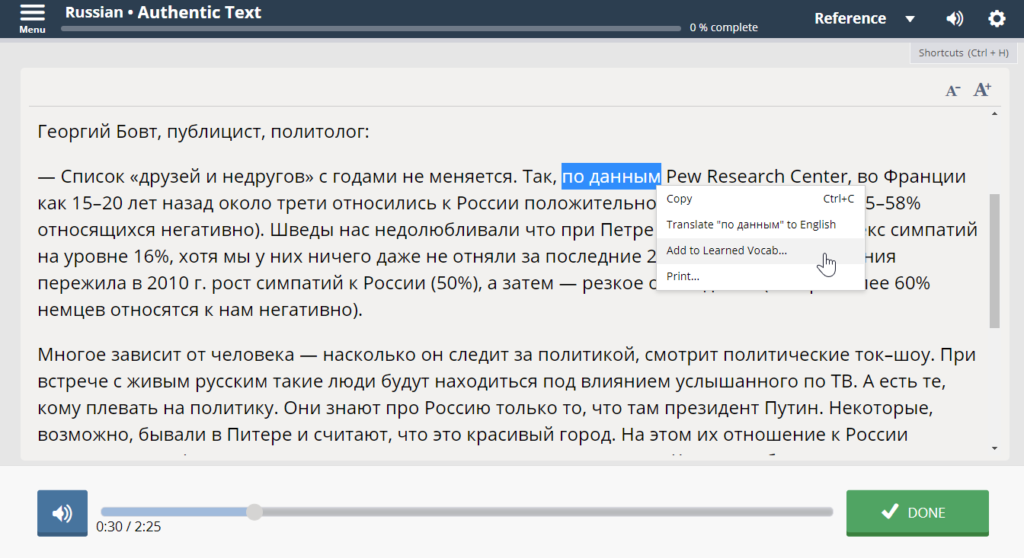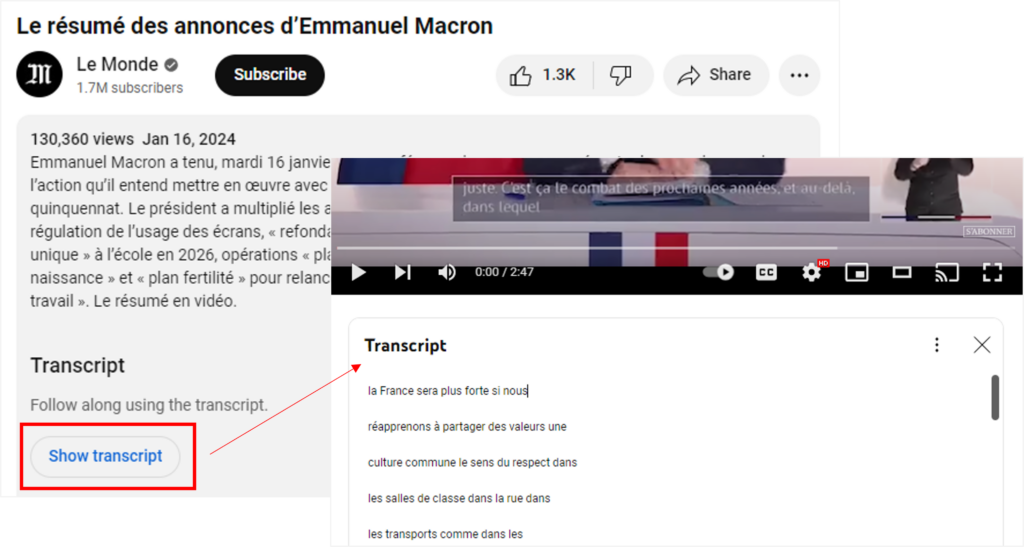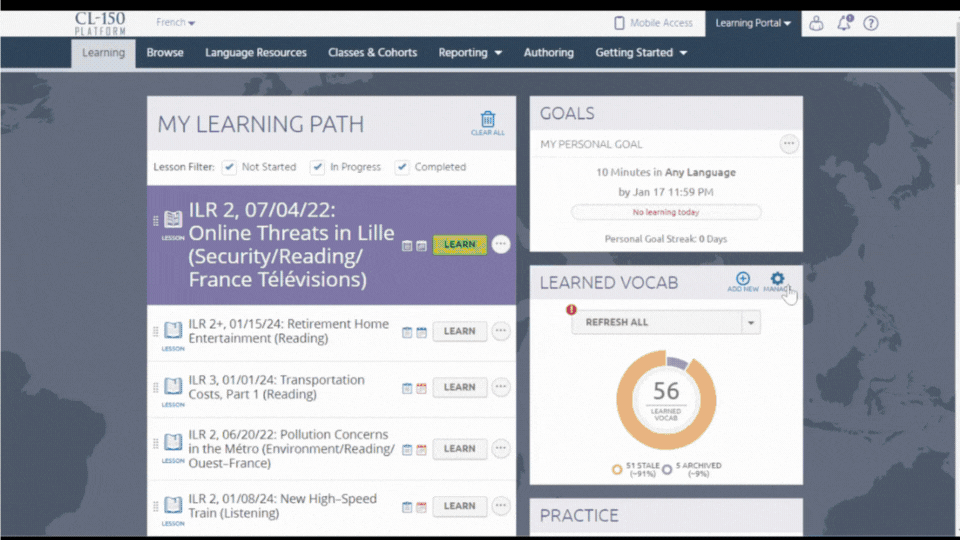Beef up your vocab 🐄 Posted by meaghan on Jan 19, 2024 in For Learners, New in Learned Vocab
If your 2024 goal is to improve your proficiency, vocab is the way.
Proficiency levels have consistently been shown to increase in tandem with vocabulary size.1, 2, 3 And studies show that of all factors contributing to language proficiency, vocabulary size is by far the single most significant factor.4, 5, 6
In most cases, you’re looking at ~1,000 new words and phrases to level up on the ILR scale.

So how are you gonna learn 1,000+ new words?
That’s about 20 new words and phrases per week for a year. Completing weekly Cohort lessons will take care of a good chunk of that.
But there are other ways to really beef up your vocab:
- Add extra vocab from Cohort lessons.
The vocab activities in each lesson help you master 15ish new words or phrases from the lesson source. But you can add extra vocab from that text. Or from the slide show. Or the comprehension questions. The lesson is your oyster.
Highlight any word or phrase from the lesson and right click to add it to your Learned Vocab. And if you’re not sure of the meaning, you can also right click to translate first before adding.

- Add vocab from anything else you read, watch, or listen to.
News articles. Podcast interviews. YouTube videos. Whatever authentic sources you’re consuming in the target language. Import the text into the CL-150 and add any new vocab to your Learned Vocab for future reviewing.
Tip: For audio sources, look for videos/podcasts that include transcriptions that you can paste in. Many YouTube videos include automated transcripts now that you can find in the video description. 
On the Add Learned Vocab screen, look for the “Add from Source” link. There, you can import a text from a URL or paste in a text. Then highlight the words and phrase you’d like to et voilà.

- Add more context to your vocab.
Building vocab isn’t just about adding more and more words. It’s about how well you know the words you’ve already learned. Which is why Learned Vocab refresh exists in the first place!
You can layer on other memory aids to your Learned Vocab. Images. Example sentences. Grammar notes. Whatever helps you remember as you’re refreshing.
Edit from the refresh screen by clicking the Edit button in the bottom right on any given word. Or edit via the Manage Vocab screen to edit words in bulk.

Beef up your Learned Vocab now. And stay tuned for an update soon about new and easier ways to refresh it all! 👀
[1] Huhta, Ari J. et al. (2011) Diagnosing reading in L2 – predictors and vocabulary profiles, Vortrag auf der ACTFL CEFR Conference 2011, 4.-6. August 2011, Provo, Utah (USA).
[2] Milton, J., & Alexiou, T. (2010). Developing a vocabulary size test for Greek as a foreign language
[3] Tschirner, E., J. Hacking, and F. Rubio. (2017). Relating Vocabulary Size to ACTFL Reading Proficiency Levels. Conference Paper, Refereed. ACTFL Annual Convention. Nashville, TN., 2017
[4] Alderson, J.C. (2005). Diagnosing foreign language proficiency. London: Continuum.
[5] Laufer, B. (1992). How much lexis is necessary for reading comprehension? In H. Bejoint & P. Arnaud (Eds.), Vocabulary and applied linguistics (pp. 126–132). London: Macmillan.
[6] Stæhr, L. S. (2008). Vocabulary size and the skills of listening, reading and writing. Language Learning Journal, 36(2), 139-152.


